Note4Students
From UPSC perspective, the following things are important :
Prelims level: Adolescent Reproductive and Sexual Health Strategy (ARSH) and the National Adolescent Health Programme (RKSK)
Mains level: social justice education
Get an IAS/IPS ranker as your 1: 1 personal mentor for UPSC 2024
Attend Now
Note4Students
From UPSC perspective, the following things are important :
Prelims level: cyber attacks
Mains level: evolving landscape of terrorism emphasizes the shift to cyberspace

Central idea
The article underscores the transformation of terrorism into cyberspace, emphasizing the significance of robust cybersecurity measures in the face of escalating state-sponsored cyberattacks.
Key Highlights:
- Mumbai holds the unfortunate title of the most terror-attacked city globally.
- The November 26, 2008 (26/11) attacks were the most audacious, lasting three days.
- Intelligence was available before 26/11 attacks, but preventive measures failed.
- Post-attack, significant changes were made in the police department and security apparatus.
Key Challenges:
- Despite reforms, the landscape of terror warfare has shifted to cyberspace.
- The Russia–Ukraine and Israel–Hamas conflicts demonstrate the growing threat of cyber warfare.
- State-sponsored cyberattacks against India increased by 278% between March 2021-September 2023.
Key Terms and Phrases:
- 26/11 terror attacks, cyberspace, cyber warfare, state-sponsored cyberattacks.
Key Examples and References:
- November 26, 2008, terror attacks in Mumbai.
- Israel-Hamas conflict and the failure of the Iron Dome against cyber threats.
- 2023 India Threat Landscape Report by Cyfirma.
Key Facts and Data:
- State-sponsored cyberattacks on India increased by 278% from March 2021-September 2023.
- India faced 13.7% of all global cyberattacks.
- 13.91 lakh cybersecurity incidents in India in 2022.
Critical Analysis:
- Cybersecurity is of paramount importance in a highly digitized world.
- Recent incidents, including Apple’s warning, highlight the urgency for robust cybersecurity measures.
- The need for nationwide education and training on cyber threats is crucial.
Way Forward:
- Urgent investment in robust cybersecurity measures across government, private sector, and individual citizens.
- Comprehensive education programs, starting in schools, to raise awareness about cyber threats.
- Adequate training and financial support for government agencies to strengthen cybersecurity.
In conclusion, the evolving landscape of terrorism emphasizes the shift to cyberspace, demanding urgent and comprehensive cybersecurity measures, education, and training to safeguard against potential online threats like a “cyber 26/11.”
Get an IAS/IPS ranker as your 1: 1 personal mentor for UPSC 2024
Attend Now
Note4Students
From UPSC perspective, the following things are important :
Prelims level: na
Mains level: Maratha mobilization for reservation
![The Marathas' Demand for Reservation: A Litigation History [2014-21] - Supreme Court Observer](https://www.scobserver.in/wp-content/uploads/2021/10/Maratha-Litigation-History-2640-x-1100-px.png)
Central Idea:
- The Maratha community’s demand for reservation in education and employment stems from a crisis of dominance, influenced by urban and rural challenges.
Urban Crisis:
- Well-paid jobs in urban areas, historically held by Marathas, have rapidly disappeared since the late 1990s.
- Large-scale manufacturing industries and establishments providing such jobs have closed or downsized, leading to increased competition for fewer opportunities.
- Marathas, historically socially superior, used their dominant caste position to secure a significant share of jobs, particularly in the public sector.
- Economic liberalization and the shrinkage of public sector jobs have intensified competition among Marathas for limited opportunities.
Rural Crisis:
- Closure of factories has led to the return of workers to villages, disrupting the pattern of workers retiring in villages and their offspring working in cities.
- Rural youth face challenges migrating to urban areas for better-paying jobs, impacting the financial support they traditionally provided to family members in villages.
- Informal sector jobs become the primary option for rural Maratha youth, diminishing their social standing and pride in rural settings.
- The focus on secure public sector jobs, which have also decreased, becomes crucial for rural Maratha youth.
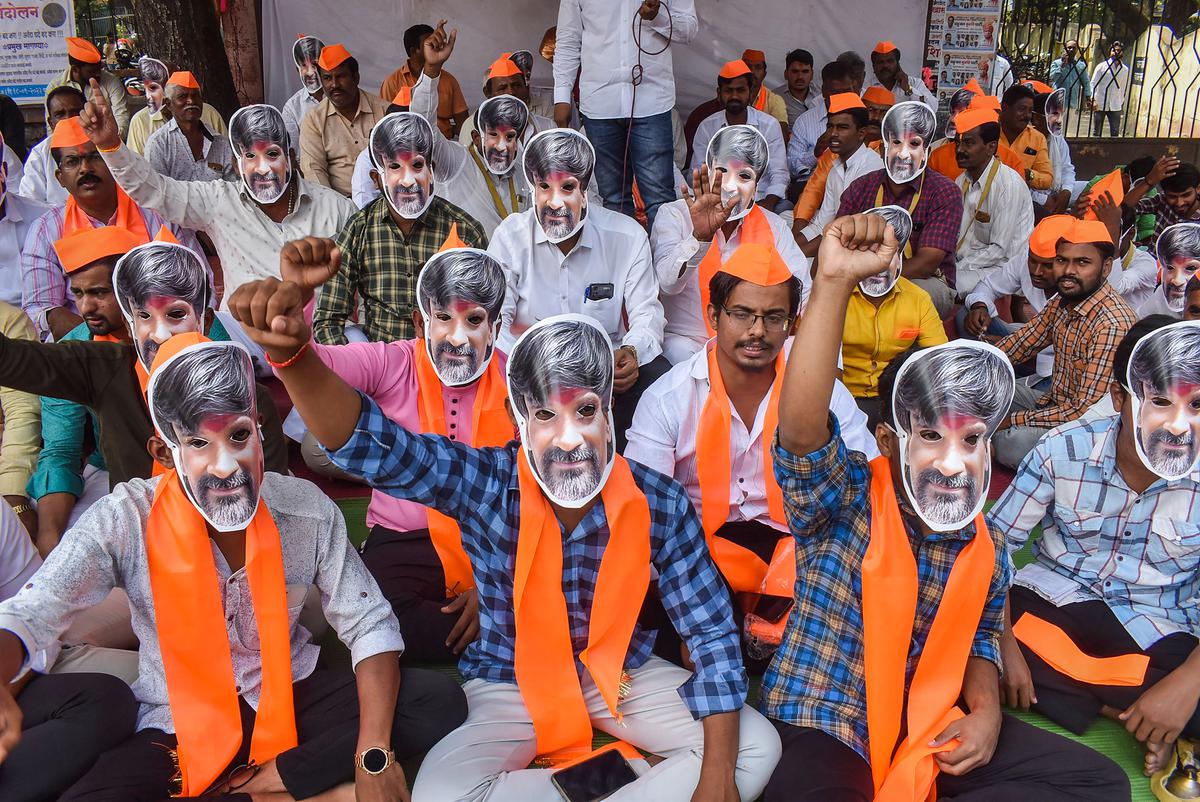
Education Challenges:
- Increased aspirations for higher education among Marathas face a decline in government institutions and a rise in private unaided colleges with exorbitant fees.
- Marathas, with limited financial resources, compete for a limited number of open-category seats in public institutions.
- Decrease in government-run educational institutions exacerbates the challenges faced by Maratha aspirants.
Crisis of Dominance:
- The combination of urban and rural crises contributes to a crisis of dominance for the Marathas.
- Disturbance of caste hierarchy norms due to Dalit mobility and OBC economic and political assertion adds to Marathas’ anxiety.
- The demand for reservation reflects the need for increased formal sector jobs and the expansion of public educational institutions to address the crisis.
Key Highlights:
- Maratha community demands reservation in education and public employment, intensifying since 2016.
- Historically, Marathas dominated well-paid jobs, but recent urban and rural crises have led to increased competition and challenges.
- Closure of manufacturing industries, decreasing public sector jobs, and rural youth’s struggles contribute to the crisis.
- Educational aspirations face challenges with a decline in government institutions and increased private college fees.
Key Challenges:
- Disappearance of well-paid urban jobs, increased competition, and shrinking public sector employment.
- Rural crisis disrupts the traditional pattern of workers retiring in villages and offspring working in cities.
- Decline in government-run educational institutions, limited open-category seats, and rising private college fees.
Key Terms and Phrases:
- Urban crisis, rural crisis, crisis of dominance, economic liberalization, formal sector jobs.
- Reservation, Maratha mobilization, well-paid jobs, private unaided colleges, public sector employment.
Key Examples and References:
- Maratha protests since 2016, closure of manufacturing industries, decreased public sector jobs.
- Disturbance in traditional caste hierarchies due to Dalit mobility and OBC economic and political assertion.
Key Facts and Data:
- Marathas historically occupied over 29% of open-category jobs in government.
- Jobs in the private formal sector increased from 2% to 3.5%.
- Contractual government jobs increased from 0.7 million to 15.9 million in 2017-18.
- Only 22.2% of colleges are managed by the government as of 2019.
Critical Analysis:
- Maratha crisis stems from economic shifts, urban-rural dynamics, and disturbance in caste hierarchies.
- Limited opportunities, competition, and declining public sector jobs contribute to the community’s mobilization.
- Educational challenges add to the complexity, demanding a comprehensive solution.
Way Forward:
- Address urban and rural crises by creating more formal sector jobs.
- Expand public educational institutions and implement large-scale scholarship programs.
- Focus on inclusive policies to reduce competition and restore traditional patterns of employment.
Conclusion:
- The Maratha mobilization for reservation is rooted in the challenges posed by the disappearance of well-paid jobs, urban-rural dynamics, and the disruption of traditional caste hierarchies. Addressing these challenges requires a focus on creating more opportunities in the formal sector and expanding accessible public education.
Get an IAS/IPS ranker as your 1: 1 personal mentor for UPSC 2024
Attend Now
Note4Students
From UPSC perspective, the following things are important :
Prelims level: India's Maritime Vision 2030
Mains level: Blue Economy: Sustainable use of ocean resources for economic development
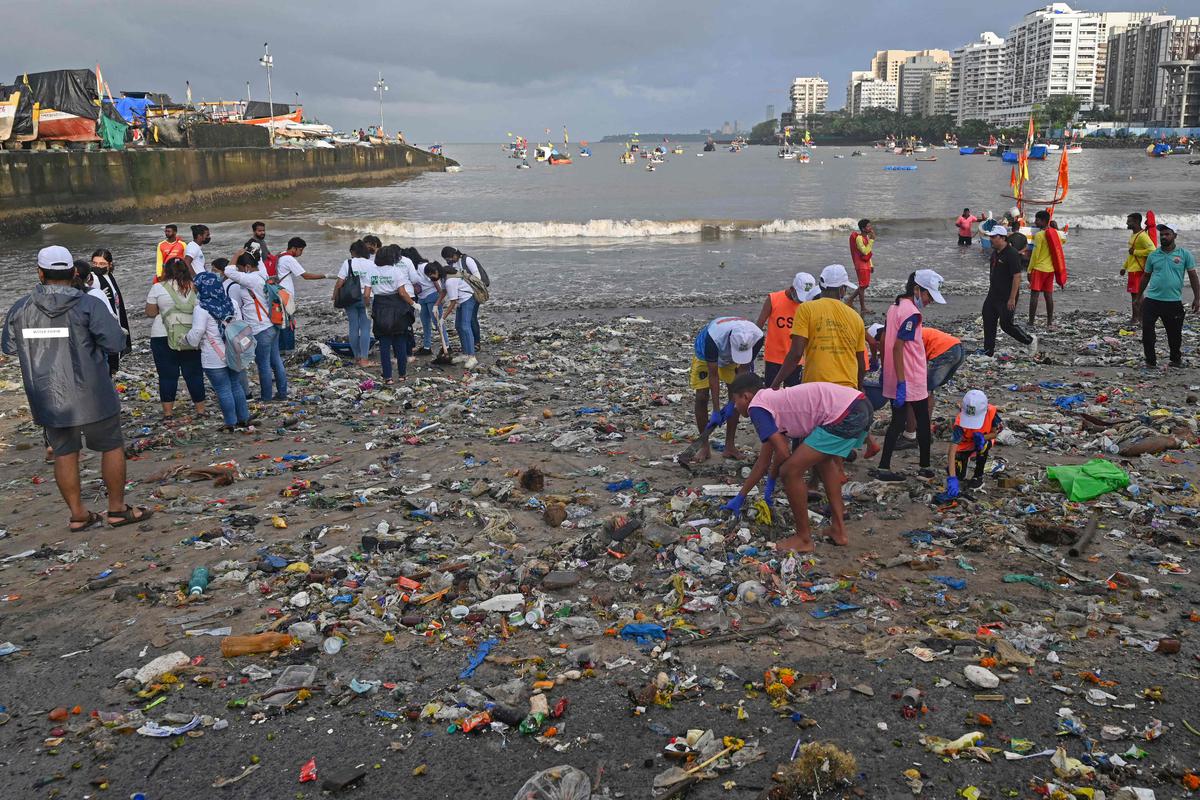
Central idea
The article underscores the evolving challenges in the maritime domain, emphasizing the shift from traditional military approaches to a developmental model for maritime security. It highlights the need for collaboration among developing nations to address unconventional threats, such as illegal fishing and climate change, while acknowledging the reluctance to prioritize collective action over political and strategic autonomy.
Key Highlights:
- Evolution of Maritime Challenges: New dimensions in hard security challenges, including asymmetrical tactics and grey-zone warfare. Use of land attack missiles and combat drones reshaping the security landscape.
- Shift in Demand for Maritime Security: Growing demand from states facing unconventional threats such as illegal fishing, natural disasters, and climate change. Need for a broader approach beyond military means to address diverse maritime challenges.
- India’s Developmental Approach: Maritime Vision 2030 focuses on economic growth and livelihood generation through port, shipping, and inland waterway development. Indo-Pacific Oceans Initiative with seven pillars, including maritime ecology, marine resources, and disaster risk reduction.
New Threats in Maritime Domain:
- Recent developments include Ukraine’s asymmetrical tactics and China’s maritime militias, indicating a shift to improvised strategies.
- Emerging threats involve grey-zone warfare, land attack missiles, and combat drones.
Demand for Maritime Security:
- Majority of recent demand stems from unconventional threats like illegal fishing, natural disasters, and climate change.
- Addressing these challenges requires commitment of capital, resources, and specialized personnel.
Global South’s Perspective:
- Developing nations perceive Indo-Pacific competition among powerful nations as detrimental to their interests.
- Challenges involve interconnected objectives in national, environmental, economic, and human security.
Challenges in Global South:
- Rising sea levels, marine pollution, climate change disproportionately impact less developed states, leading to vulnerability.
- Unequal law-enforcement capabilities and lack of security coordination hinder joint efforts against maritime threats.
Creative Models for Maritime Security:
- Maritime security transcends military actions, focusing on generating prosperity and meeting societal aspirations.
- India’s Maritime Vision 2030 emphasizes port, shipping, and inland waterway development for economic growth.
- Dhaka’s Indo-Pacific document and Africa’s Blue Economy concept align with a developmental approach.
Fight Against Illegal Fishing:
- Significant challenge in Asia and Africa marked by a surge in illegal, unreported, and unregulated fishing.
- Faulty policies encouraging destructive methods like bottom trawling and seine fishing contribute to the problem.
India’s Indo-Pacific Oceans Initiative:
- Encompasses seven pillars, including maritime ecology, marine resources, capacity building, and disaster risk reduction.
- Advocates collective solutions for shared problems, garnering support from major Indo-Pacific states.
Challenges in Achieving Consensus:
- Implementation of collaborative strategy faces hurdles in improving interoperability, intelligence sharing, and establishing a regional rules-based order.
- Balancing sovereignty and strategic independence remains a priority for many nations, hindering consensus.
Key Challenges:
- Complexity of Unconventional Threats: Conventional military approaches insufficient; requires capital, resources, and specialist personnel. Challenges include illegal fishing, marine pollution, human trafficking, and climate change.
- Global South’s Coordination Challenges: Unequal law-enforcement capabilities and lack of security coordination among littoral states. Reluctance to prioritize collective action due to varying security priorities and autonomy concerns.
- Vulnerability of Less Developed States: Disproportionate impact of rising sea levels, marine pollution, and climate change on less developed states. Vulnerability stemming from inadequate resources to combat environmental and security challenges.
- Lack of Consensus and Reluctance: Reluctance among littoral states to pursue concrete solutions and collaborate. Paradox of non-traditional maritime security, where collective issues clash with political and strategic autonomy.
Key Terms and Phrases:
- Grey-Zone Warfare: Tactics that fall between peace and war, creating ambiguity in conflict situations.
- Asymmetrical Tactics: Strategies that exploit an opponent’s weaknesses rather than confronting strengths directly.
- Maritime Vision 2030: India’s 10-year blueprint for economic growth in the maritime sector.
- Blue Economy: Sustainable use of ocean resources for economic development.
- Indo-Pacific Oceans Initiative: India’s initiative with pillars like maritime ecology, marine resources, and disaster risk reduction.
- IUU Fishing: Illegal, unreported, and unregulated fishing.
- Bottom Trawling and Seine Fishing: Destructive fishing methods contributing to illegal fishing.
Key Examples and References:
- Ukraine’s Asymmetrical Tactics: Utilization of unconventional strategies in the Black Sea.
- China’s Maritime Militias: Deployment in the South China Sea as an example of evolving threats.
- India’s Maritime Vision 2030: Illustrates a developmental approach to maritime security.
- Illegal Fishing in Asia and Africa: Rising challenge with negative environmental and economic impacts.
Key Facts and Data:
- Maritime Vision 2030: India’s 10-year plan for the maritime sector.
- Indo-Pacific Oceans Initiative: Seven-pillar initiative for collective solutions in the maritime domain.
Critical Analysis:
- Shift to Developmental Model: Emphasis on generating prosperity and meeting human aspirations in addition to traditional security measures.
- Comprehensive Maritime Challenges: Recognition of diverse challenges beyond military threats, including environmental and economic goals.
- Littoral State Reluctance: Paradox in the Global South, where collective issues clash with autonomy, hindering collaborative solutions.
Way Forward:
- Collaborative Strategies:Improved interoperability, intelligence sharing, and agreement on regional rules-based order.
- Prioritizing Collective Action: Developing nations must prioritize collective action over sovereignty for effective maritime solutions.
- Sustainable Development Goals: Prioritize sustainable development goals in littoral states, addressing challenges such as illegal fishing and climate change.
Get an IAS/IPS ranker as your 1: 1 personal mentor for UPSC 2024
Attend Now
Note4Students
From UPSC perspective, the following things are important :
Prelims level: na
Mains level: constitutional principles in the execution of international obligations
Central idea
Tax treaties or protocols signed by the executive to alter or vary the provisions of the IT Act must withstand the rigours of the constitutional and statutory requirements
Key Highlights:
- Landmark Decision: The Supreme Court’s decision in Assessing Officer (International Tax) vs Nestle SA is a landmark ruling reaffirming the constitutional principle that international obligations assumed by the executive require specific legislative conditions for legal effect.
- Constitutional Framework: The judgment delves into the interplay between domestic law and international law within India’s constitutional framework, emphasizing the need for parliamentary approval when international obligations conflict with domestically enacted laws.
- Article 73 and Article 253: The powers of the Union executive, as per Article 73, are co-terminus with those of Parliament, allowing the executive to assume international obligations without legislation. However, Article 253 emphasizes the dualism between international law and municipal law, requiring a domestic legislative process for conflicting obligations.
- Delegated Powers: Parliament can delegate treaty-making powers to the executive, exemplified by tax treaties under section 90 of the Income Tax (IT) Act. The court clarifies that assuming international obligations and enforcing them domestically are distinct processes.
- Section 90 of IT Act: The judgment interprets section 90, titled “Agreement with foreign countries or specified territories,” emphasizing the necessity of a notification for the implementation of agreements related to the avoidance of double taxation.
- MFN Clauses: Most-Favoured-Nation (MFN) clauses, aimed at altering taxation provisions, must be notified for incorporation into domestic tax law. Failure to do so would create uncertainty in the tax system, with no constitutional or statutory backing for unnotified application.
- Chaos and Uncertainty: Unnotified application of MFN clauses could lead to chaos and uncertainty, with taxpayers and assessing officers interpreting and applying the clauses based on individual understanding, lacking legal foundation.
- Scope of Judgment: The judgment’s scope is limited to the need for a notification for the implementation of MFN clauses, and questions related to diplomatic accountability or the executive’s capacity to prolong the performance of international obligations were not addressed.
- Importance of Constitutional Principles: The Supreme Court’s decision is applauded for upholding democratic principles, ensuring that international obligations assumed by the executive align with constitutional and statutory requirements.
Challenges:
- Future Events Contingency: The activation of MFN clauses contingent upon future events poses challenges in their timely application and raises questions about the executive’s diplomatic accountability.
Key Phrases:
- Dualism of Legal Systems: The constitutional framework recognizes international law and municipal law as separate and distinct legal systems.
- Domestic Legislative Processes: International obligations conflicting with domestic laws must undergo legislative processes for enforceability in courts.
- Separation of Powers: The judgment underscores the importance of the doctrine of separation of powers in judicially incorporating international obligations into domestic law.
Critical Analysis:
The court’s decision provides a robust interpretation of constitutional principles, ensuring that assumed international obligations align with domestic legal processes. The focus on the necessity of notifications for the implementation of MFN clauses reflects the court’s commitment to maintaining clarity and avoiding chaos in the tax system.
Key Examples and References:
- Article 73 and 253 of the Constitution: The judgment extensively refers to constitutional provisions such as Article 73 and Article 253 to establish the legal framework.
Way Forward:
- Legislative Precision: Policymakers should ensure precision in legislative processes, especially concerning the implementation of international obligations, to avoid legal ambiguities.
- Clarity in Notification: The executive should prioritize clarity in notifications, particularly when activating clauses contingent upon future events, to prevent interpretational challenges.
- Review of Existing Treaties: Periodic reviews of existing tax treaties to ensure they align with constitutional and statutory requirements and to address any potential issues related to conflicting obligations.
- Enhanced Diplomatic Engagement: Diplomatic efforts should focus on ensuring that assumed international obligations are seamlessly integrated into domestic legal frameworks to uphold constitutional principles.
The Supreme Court’s judgment serves as a guide for maintaining the sanctity of constitutional principles in the execution of international obligations, particularly in the context of tax treaties.
Get an IAS/IPS ranker as your 1: 1 personal mentor for UPSC 2024
Attend Now
Note4Students
From UPSC perspective, the following things are important :
Prelims level: Direct Benefit Transfer (DBT) JAM Trinity
Mains level: DBT's success
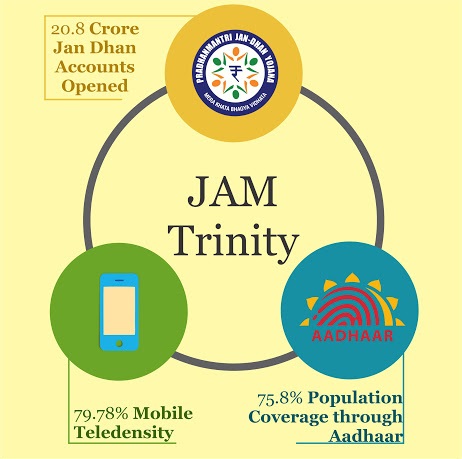
Key Highlights:
- India’s Direct Benefit Transfer (DBT) system lauded globally as a “logistical marvel.”
- DBT utilizes digital infrastructure to directly transfer government scheme benefits, covering 310 schemes across 53 ministries.
- The JAM Trinity (Jan Dhan, Aadhaar, and Mobile) post-2017-18 maximized DBT’s impact.
Dignity of the Poor:
- DBT’s overlooked benefit is its preservation of the dignity of the poor.
- Without corruption or leakages, DBT eliminates the need for the poor to parade for government benefits.
- Shift in approach—government benefits reaching the poor directly without intermediaries.
Poverty Perspectives and Historical Context:
- Discussion on poverty perspectives, referencing Michael Young’s “The Rise of The Meritocracy.”
- Challenge to the prevailing view that poverty is an individual’s fault, offering an alternative, rights-based approach.
- Advocacy for understanding poverty from an individual rights perspective and addressing historical contexts.
Rights-Based Approach to Poverty:
- Recognition of basic security rights for citizens regarding food, shelter, and health.
- Emphasis on shared societal responsibility for poverty, especially by the rich and elite.
- Contrast with technical solutions, highlighting the need to work with the poor.
Preserving Dignity in Design:
- Importance of not just providing benefits but also considering how they are delivered.
- DBT as a mechanism that ensures rightful benefits reach the poor while preserving their dignity.
- Elimination of the poverty parade with the government reaching the poor.
Replicating DBT Success:
- Suggestion to replicate the DBT design in other areas, with a focus on the judiciary.
- Reference to the judiciary’s challenges and an appeal to ensure justice reaches the poor efficiently.
- Call for collective efforts to address complex problems.
Challenges:
- Unquantifiable nature of preserving dignity makes it challenging to measure its impact.
- The need for broader societal shifts in perspectives on poverty and shared responsibilities.
Key Phrases:
- JAM Trinity (Jan Dhan, Aadhaar, and Mobile)
- Poverty parade
- Rights-based approach
- Shared societal responsibility
- Technical solutions vs. working with the poor
- Veil of ignorance (Rawlsian perspective)
- Dignity preservation in program design
Critical Analysis:
- Emphasis on the overlooked aspect of preserving dignity brings a unique perspective.
- The article challenges prevailing views on poverty, advocating for a rights-based approach.
- DBT is presented as a successful model, but challenges of replicating its success are acknowledged.
- The article connects poverty perspectives with societal responsibilities and justice delivery.
Key Examples and References for quality enrichment of mains answers:
- Michael Young’s “The Rise of The Meritocracy”
- The Tyranny of Experts by William Easterly
- Reference to the judiciary’s challenges and the appeal of the first woman tribal President.
Key Data and Facts:
- 310 government schemes across 53 ministries utilize DBT.
- Estimated savings of 1.14% of GDP attributed to DBT.
- 79,813 cases pending before 34 judges in the judiciary.
Key Terms:
- Direct Benefit Transfer (DBT)
- JAM Trinity
- Rights-based approach
- Poverty parade
- Veil of ignorance
- Shared societal responsibility
Way Forward:
- Advocacy for applying DBT’s success in other sectors, particularly the judiciary.
- Acknowledgment of complexity but a call for collective efforts to address challenges.
Get an IAS/IPS ranker as your 1: 1 personal mentor for UPSC 2024
Attend Now
Note4Students
From UPSC perspective, the following things are important :
Prelims level: Composition of Constitution Benches
Mains level: Suggestion to split the Supreme Court into a Final Court of Appeal and a permanent Constitution Bench

Central idea
The article discusses the challenges faced by the Supreme Court of India, the historical proposals for structural changes, and the recent proposal to create Constitution Benches as a permanent feature. It explores the need for regional benches to alleviate the overwhelming caseload and enhance the court’s efficiency, considering historical recommendations and current demands for reform.
Jurisdictions of the Supreme Court:
- Original, appellate, and advisory jurisdictions under the Constitution.
- Functions as a Constitutional Court and Court of Appeal.
Composition of Constitution Benches:
- Typically comprise five, seven, or nine judges.
- Deliberate on issues related to constitutional law.
- Article 145(3) mandates a minimum of five judges for substantial constitutional questions.
Broad Jurisdiction of the Supreme Court:
- Hears cases in Division Benches (two judges) or full Benches (three judges).
- Addresses diverse topics, from film prohibitions to allegations against public officials.
- Notable instances of entertaining frivolous public interest litigations.
Current Caseload and Need for Structural Change:
- 79,813 pending cases before 34 judges, prompting calls for structural reforms.
- CJI D.Y. Chandrachud’s recent announcement on establishing varied-strength Constitution Benches permanently.
Historical Proposals for Structural Change:
- Tenth Law Commission (1984) proposed splitting the Supreme Court into Constitutional and Legal Divisions.
- Eleventh Law Commission (1988) reiterated the need for division, aiming at wider justice availability.
- Bihar Legal Support Society v. Chief Justice of India (1986) expressed the “desirability” of a National Court of Appeal.
- 229th Law Commission Report (2009) recommended regional benches for non-constitutional issues.
Colonial Legacy and Evolution of the Supreme Court:
- Three Supreme Courts during colonial times (Bombay, Calcutta, Madras).
- Indian High Courts Act of 1861 replaced Supreme Courts with High Courts.
- Government of India Act, 1935, created the Federal Court of India.
- The Supreme Court, established on January 28, 1950, under Article 124 of the Constitution.
Increasing Judges and Overburdened Court:
- Evolution of the Supreme Court from eight judges in 1950 to 34 in 2019.
- Overburdened court issuing around 8-10 decisions yearly through Constitution Benches.
- Only four out of 1,263 decisions in 2022 from Constitution Benches.
Critical Analysis:
- Overburdened Judiciary: High number of pending cases (79,813) indicates the burden on the Supreme Court. The overwhelming workload affects the efficiency of the court in delivering timely justice.
- Historical Proposals: Historical proposals, like the Tenth Law Commission’s suggestion in 1984, proposed splitting the Supreme Court into Constitutional and Legal Divisions.The aim was to make justice more accessible and reduce litigants’ fees.
- Regional Benches Proposal: The 229th Law Commission Report (2009) recommended establishing regional benches to hear non-constitutional issues. The proposal aimed to decentralize workload and allow the Supreme Court to focus on constitutional matters.
- Historical Background: Evolution of the Supreme Court from colonial times with the creation of regional Supreme Courts. Transformation from three Supreme Courts (Bombay, Calcutta, Madras) to the current centralized structure.
Key Examples and References:
- Bihar Legal Support Society v. Chief Justice of India (1986) suggested establishing a National Court of Appeal.
- The 229th Law Commission Report (2009) recommended regional benches.
Key Facts:
- The Court sits in benches of varying sizes, as determined by the Registry on the directions of the Chief Justice of India (CJI), who is the Master of the Roster
- The Supreme Court was founded on January 28, 1950, under Article 124 of the Constitution.
- Workforce increased from 8 judges in 1950 to 34 judges in 2019 due to rising caseload.
Way Forward:
- Suggestion to split the Supreme Court into a Final Court of Appeal and a permanent Constitution Bench.
- A Constitution Bench (V. Vasanthkumar v. H.C. Bhatia) analyzing and proposing measures to protect citizens’ access to the Supreme Court.
- Opportunity to address structural gaps by designating appeal benches as regional benches under CJI’s guidance.
Get an IAS/IPS ranker as your 1: 1 personal mentor for UPSC 2024
Attend Now
Note4Students
From UPSC perspective, the following things are important :
Prelims level: na
Mains level: Caste as a nation within the nation

Central idea
Vontibettu Thimmappa Rajshekar Shetty (VTR) authored 30 books centering on caste, nation and religion
Key Highlights:
- Vontibettu Thimmappa Rajshekar Shetty (VTR) is a renowned figure in the Ambedkarite, anti-caste movement, known for his fearless journalism.
- Born in 1932, VTR played a significant role in shaping the intellectual discourse of the anti-caste sphere since the 1970s.
- Founder of the world-famous periodical Dalit Voice in 1981, VTR advocated for Dalit rights and challenged the Brahminical state order.
Challenges:
- Faced opposition and legal challenges, including being booked under India’s Terrorism and Anti-Disruptive Activities Act.
- Dalit Voice was forced to shut down due to assault by the BJP, rechristened as Brahmana Jaati Party.
Key Phrases:
- “Triumph of Ambedkarism”: VTR envisioned the 21st century as a period of triumph for Ambedkarism.
- “Caste as a nation within the nation”: VTR viewed caste as a separate entity rather than a subsidiary of the nation-state.
Critical Analysis:
- VTR’s journalism focused on exposing Brahminical hypocrisies and advocating for the rights of the oppressed.
- Fearless critiques of the caste system and Brahminical state order marked his intellectual contributions.
- VTR’s alignment with international radical movements showcased a commitment to broader social justice issues.
- Alliances with African-American movements and international solidarity reflected a global perspective on caste-based discrimination.
- Booking under India’s Terrorism and Anti-Disruptive Activities Act highlighted the resistance faced by VTR for his outspoken journalism.
- Dalit Voice’s closure due to opposition from the BJP underscores the challenges anti-caste voices encounter in political landscapes.
- Despite significant contributions, VTR and many anti-caste legends are often inadequately honored and celebrated.
- The proposed establishment of a national award for fearless journalists in V T Rajshekar’s name aims to recognize and honor his impactful work.
Key Examples and References:
- Founded Dalit Voice in 1981 and authored 30 books, including “Dalit: The Black Untouchables of India.”
- Inspired solidarity between Dalits and contemporary African-American activists.
Key Data:
- Born on July 17, 1932.
- Founded Dalit Voice in 1981.
Key Facts:
- VTR faced legal challenges, including being booked under India’s Terrorism and Anti-Disruptive Activities Act.
- Dalit Voice shut down due to opposition from the BJP.
Key Terms:
- Ambedkarism,
- Brahminical state order,
- Dalit Voice,
- Caste-based violence,
- Internationalism,
- Brahmana Jaati Party.
Way Forward:
- Recognition and celebration of VTR’s contributions to anti-caste journalism and social justice.
- Proposed establishment of a national award for fearless journalists in the name of V T Rajshekar to honor his legacy.
Get an IAS/IPS ranker as your 1: 1 personal mentor for UPSC 2024
Attend Now
Note4Students
From UPSC perspective, the following things are important :
Prelims level: Char Dham Project
Mains level: Environment Impact Assessment (EIA)
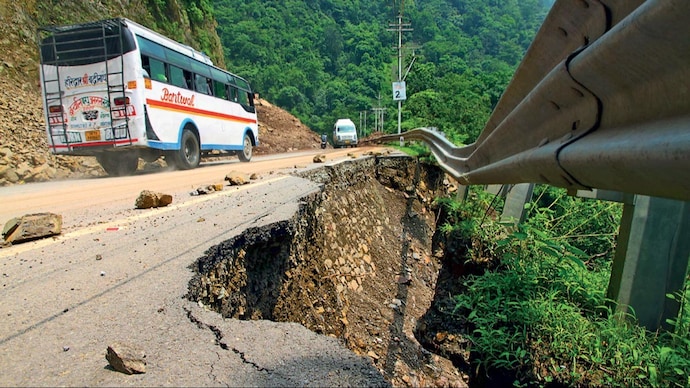
Central idea
The Uttarkashi tunnel collapse has thrown light on the major flaws in the infrastructure development in the Indian Himalayan Region
Key Highlights:
- The Char Dham Project in the Indian Himalayan Region (IHR) has raised concerns about the sustainability of the current development model.
- The focus is on the carrying capacity of the IHR, questioning the extensive road widening, hydropower projects, and tourism promotion.
- The geological sensitivity of the Himalayas, marked by earthquakes and frictional shear rocks, makes such infrastructure projects dangerous.
Challenges:
- Lack of adherence to mountain construction codes and basic safety protocols in the rush for construction projects.
- The fragmentation of the Char Dham Project into smaller sections for Environment Impact Assessment (EIA) raises questions about its comprehensive evaluation.
- The need to address the broader issue of carrying capacity in the IHR, encompassing hydropower projects, tourism, and road development.
Key Phrases:
- “Construction in this zone is dangerous” due to the sensitive geological nature of the Himalayas.
- The Supreme Court should address the issue of carrying capacity in the Himalayas, considering the impact of infrastructure on the ecosystem.
- The transformative phase in the IHR requires a reevaluation of the integration approach with new geographies.
Critical Analysis:
- The article criticizes the lack of seriousness in implementing safety measures, citing the Silkyara tunnel incident in Uttarakhand.
- Emphasis on learning from failures, international protocols, and the inclusion of local communities in monitoring structures are suggested for safer infrastructure development.
Key Examples and References:
- The Atal tunnel in Himachal Pradesh is cited as an exception with a rigorous safety protocol, contrasting it with the safety lapses in the Char Dham Project.
- The flash floods of 2013 in Uttarakhand are mentioned as the basis for initiating the Char Dham Yatra and subsequent infrastructure projects.
Key Data:
- The Char Dham Project is approximately 900 km long, broken into 53 sections for separate EIAs.
- Geological and geotechnical studies highlight the dangerous nature of construction in the Himalayas.
Key Facts:
- The carrying capacity discussion extends beyond the number of people to include infrastructure aspects like hydropower projects and roads.
- The importance of a legislative architecture that involves local communities and adheres to international protocols for safer infrastructure development.
Key Terms for value addition in your answer:
- Carrying capacity
- Environmental Impact Assessment (EIA)
- Geological sensitivity
- Transformative phase
- Safety protocols
Way Forward:
- Urgent dialogue on carrying capacity in the Himalayas, considering the total impact of infrastructure development.
- Adoption of international protocols and legislative architecture for safer construction, involving local communities and civil society.
- Reevaluation of the integration approach in the transformative phase of the IHR, ensuring stability and safety standards in infrastructure projects.
Get an IAS/IPS ranker as your 1: 1 personal mentor for UPSC 2024
Attend Now
Note4Students
From UPSC perspective, the following things are important :
Prelims level: PM2.5 and PM10
Mains level: critical role of transitioning to electric trucks to mitigate PM2.5 pollution
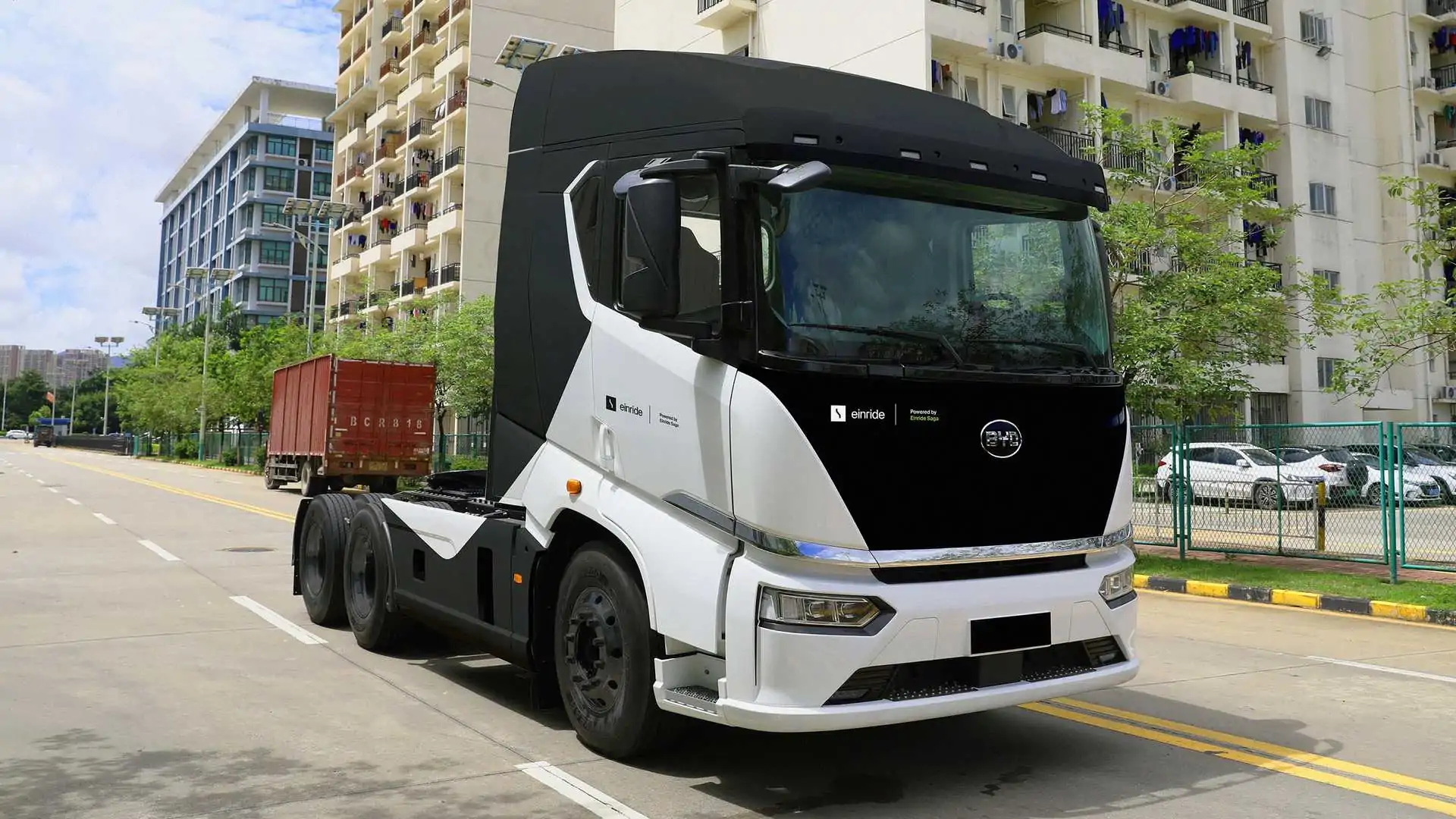
Central idea
The central idea revolves around the urgent need to address worsening air quality in Indian cities, focusing on the critical role of transitioning to electric trucks to mitigate PM2.5 pollution. Despite challenges like upfront costs, the article emphasizes the imperative of swift action, proposes green freight corridors as a demonstration, and calls for a concerted effort involving public and private sectors to accelerate the transition and ensure a healthier urban environment.
Key Highlights:
- Air Quality Crisis: Rising air pollution in Indian cities necessitates prioritizing mitigation strategies, focusing on PM2.5 and PM10 pollution from the transport and construction sector.
- Truck Fleet Expansion: The significant increase in the truck fleet poses a threat to air quality, and the transition to electric trucks is crucial for sustainability and energy security.
Challenges:
- Air Pollution Impact: The annual addition of 9 lakh new trucks to Indian roads contributes to air pollution, consuming a substantial portion of oil imports and contributing to over 90% of road transport CO2 emissions.
- Obstacles to Electric Adoption: Upfront costs and charging infrastructure constraints pose challenges to the adoption of electric trucks, despite the success in electrifying rail freight and buses.
Key Phrases:
- Urgent Deployment: Urgent deployment of solutions is paramount in addressing the air quality crisis.
- Targeted Mitigation: Diesel trucks and dust mitigation are identified as significant PM sources requiring immediate attention.
- Corridor Demonstration: Green freight corridors are proposed as a demonstration effect to accelerate the transition to electric trucks.
Critical Analysis:
- Swift Action Call: The need for swift action is emphasized, with a call to accelerate the pace of transition to electric trucks.
- Financial Implications: Public funding alone is insufficient, and the importance of attracting private and institutional capital is highlighted.
- Decarbonization Priority: Despite the success in electrifying three-wheelers, truck electrification is recognized as a pivotal step in transport sector decarbonization.
Key Examples and References:
- E-truck Demand: The demand for 7,750 e-trucks in India by 2030 is cited as a potential measure to save over 800 billion liters of diesel till 2050.
- Cost Disparity: The upfront cost disparity between mid-range electric trucks and diesel trucks is identified as a major hurdle.
Key Data:
- Electric Penetration Rate: India’s electric vehicle penetration rate has crossed 6%, but electric trucks remain a challenge.
- Fleet Projection: The Indian truck fleet is projected to reach 1.7 crore in 2050, emphasizing the urgency of transitioning to electric trucks.
Key Facts:
- Corridor Proposal: Electrifying expressways and national highways as green freight corridors is proposed for demonstration and impact.
- Financial Innovation: Innovative financial instruments and a conducive regulatory environment are deemed essential for the breakthrough in truck electrification.
Way Forward:
- Concerted Efforts: Urges the need for concerted efforts, including feasibility studies, demand aggregation, and a conducive regulatory environment, to create green freight corridors.
- Recognition of Urgency: Stresses the importance of recognizing the urgency in addressing air quality issues and transitioning to electric trucks for a healthier urban environment.
Get an IAS/IPS ranker as your 1: 1 personal mentor for UPSC 2024
Attend Now

Central idea
On Constitution Day, voices are emerging to replace India’s Constitution, a unique document created through extensive discussion and amendments.
Comparative Constitutionalism:
- The comparison with other countries like France, Nepal, Chile, and Uzbekistan highlights India’s distinct process of constitution-making.
- Critics label the present Constitution as “colonial,” citing similarities with the Government of India Act 1935, but the historical context and unique influences are acknowledged.
Historical Influences and Unique Drafting Process:
- Dr. Rajendra Prasad asserted that India wasn’t bound to adhere strictly to global constitutional categories, emphasizing the influence of India’s historical realities.
- The Nehru Report’s significance in shaping constitutional ideals, serving as a foundation for future constitutional struggles.
Challenges and Criticisms:
- The challenge lies in addressing criticisms of the Constitution being “colonial” and responding to calls for a rewrite, balancing historical influences with contemporary needs.
- Achieving political consensus, as witnessed in the unique drafting process, is a monumental task, especially considering the diverse opinions and interests.
Back2Basics: The Government of India Act (1935)
- Under Lord Linlithgow’s leadership, a committee drafted the Government of India Act 1935, which was passed by the British Parliament and implemented.
- The Act drew from the Simon Commission Report, Round Table Conferences, White Paper of 1933, and Joint Select Committees’ reports to formulate its provisions.
Provisions of the GoI Act, 1935:
- All India Federation: Established an All-India Federation comprising British Indian Provinces and Indian States, although its implementation was hindered by lack of princely state participation.
- Provincial Autonomy: Introduced provincial autonomy where provinces functioned as autonomous units with responsible governments, though governors retained significant powers.
- Division of Subjects: Introduced three lists—Federal, Provincial, and Concurrent—to delineate legislative authority between the Centre and provinces, aiming to clarify jurisdictional matters:
|
Description |
Example Subjects |
| Federal List |
Subjects of all-India interest requiring uniform treatment across British India. Only the Federal Legislature had the authority to legislate. |
Defence, Foreign Affairs, Currency, Railways, Taxes on Income |
| Provincial List |
Subjects of local interest where Provincial Legislatures had exclusive jurisdiction. |
Public Health, Police, Local Government, Agriculture, Education |
| Concurrent List |
Subjects of both Provincial and Federal interest, requiring uniformity across the country. Both levels of government could legislate. |
Criminal Law, Marriage and Divorce, Bankruptcy, Trusts, Trade Unions |
|
Key Terms and Phrases:
- Nehru Report: Draft constitution prepared in 1928 as a response to the challenge posed by Lord Birkenhead, emphasizing fundamental rights and democratic principles.
- Government of India Act 1935: Considered by some as a “colonial” precursor to the Indian Constitution, but viewed differently by considering historical context.
Critical Analysis:
- The article navigates the complexities of assessing India’s Constitution, acknowledging historical influences while defending its efficiency in serving the nation.
- The challenges of potential rewriting are highlighted, emphasizing the need for political consensus and the unique historical context.
Way Forward:
- The way forward involves careful consideration of the Constitution’s strengths, historical foundations, and the feasibility of rewriting in the context of contemporary needs.
- Any potential rewriting should uphold the principles of a “fair measure of general agreement” among India’s diverse population, echoing the spirit of the Nehru Report.
Get an IAS/IPS ranker as your 1: 1 personal mentor for UPSC 2024
Attend Now
Note4Students
From UPSC perspective, the following things are important :
Prelims level: COP 28
Mains level: climate change action is essential for economic sustainability

Central idea
The article emphasizes that climate change action is essential for economic sustainability and counters the notion that it is unaffordable. It highlights the impact of fossil fuels on the cost-of-living crisis and advocates for redirecting funds from fossil fuel subsidies to renewable energy. The author calls for international cooperation at COP28 to triple renewable energy capacity, double energy efficiency, and address climate justice concerns.
Key Highlights:
- Global Cost-of-Living Crisis: Inflation’s widespread impact on billions globally, prompting a false narrative of green initiatives against the interests of the poor.
- Fossil Fuels and Economic Strain: Fossil fuels, a major driver of the cost-of-living crisis, contribute to economic strain, affecting household budgets and impeding growth.
- Worsening Climate Disasters: Amid rising costs, climate disasters intensify, causing economic damage and affecting millions globally.
Key Challenges:
- Fossil Fuel Dependency: Persistent reliance on fossil fuels remains a significant hurdle to addressing the cost-of-living crisis and mitigating climate change.
- Government Spending on Subsidies: Trillions spent on fossil fuel subsidies divert funds from essential services and hinder investments in renewable energy.
Key Terms:
- Cost-of-Living Crisis: Global economic strain exacerbated by inflation.
- Fossil Fuel Subsidies: Government financial support to the fossil fuel industry.
- Renewable Energy: Sustainable alternatives to fossil fuels.
- Climate Disasters: Increasingly severe climate-related events.
- Energy Access: Ensuring access to reliable and affordable energy.
Key Phrases for value addition:
- “Green versus poor” Narrative: Misleading rhetoric obscuring the need for a sustainable future.
- “Fossil fuel taps can’t be turned off overnight”: Recognizing the gradual nature of transitioning from fossil fuels.
- “Global Stocktake on climate action”: Assessment of progress and tools to speed up climate action.
- “Tripling the world’s renewable energy capacity”: Ambitious goals for renewable energy expansion.
- “Fear Mongering”: Misleading tactics to discourage climate action.
Key Examples and References:
- Impact of Fossil Fuel Prices: Household bills rising up to $1,000 in 2022.
- Government Spending: Trillions spent globally on fossil fuel subsidies in 2022.
Key Facts:
- Climate Predictions: This year projected to be the hottest in 125,000 years.
- Inflation Impact: Disproportionately affecting the poorest households.
- Fossil Fuel Subsidies: Diverting funds from essential services and renewable energy projects.
Key Data:
- Global Spending on Subsidies: Trillions allocated to fossil fuel subsidies.
- Climate Impact: Economic damage and lives affected by escalating climate disasters.
Critical Analysis:
- The article underscores the interconnected challenges of inflation, fossil fuel dependency, and climate change.
- Governments’ hesitation to phase out subsidies is identified as a critical obstacle.
- Emphasis on the imperative shift to renewable energy for economic growth and effective climate action.
Way Forward:
- Advocacy: Push for responsible phasing out of fossil fuel subsidies.
- Encouragement: Support governments in investing in renewable energy and energy-efficient solutions.
- Climate Justice: Back initiatives addressing climate justice and adaptation to climate impacts.
Get an IAS/IPS ranker as your 1: 1 personal mentor for UPSC 2024
Attend Now
Note4Students
From UPSC perspective, the following things are important :
Prelims level: GHG Emissions
Mains level: climate change and food insecurity
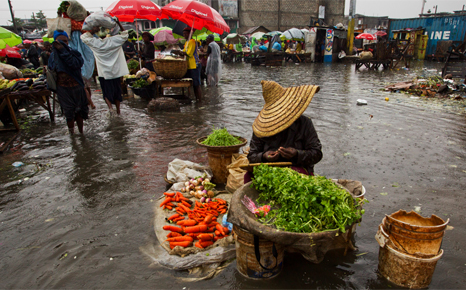
Central idea
The article underscores the critical challenges of climate change and food insecurity facing humanity. It emphasizes the significance of climate-smart agriculture (CSA) as a holistic approach, promoting sustainable development, resilience to climate change, and greenhouse gas emission reduction.
Key Highlights:
- Global Challenges: Addressing climate change and food insecurity as critical global issues.
- Impact on Agriculture: Discussing the negative effects of climate change on agriculture, leading to increased challenges for farmers.
- Holistic Solution: Introducing climate-smart agriculture (CSA) as a holistic solution to adaptation and mitigation challenges.
- Emphasizing Importance: Highlighting the importance of CSA in enhancing resilience, improving productivity, and reducing greenhouse gas emissions.
- Government Initiatives: Citing Indian government initiatives promoting CSA, such as the National Adaptation Fund and Soil Health Mission.
Key Challenges:
- Climate Risks: Analyzing the substantial risks posed by climate change to agricultural productivity, with India potentially facing a 9% decline in crop yield.
- Need for Reforms: Discussing the need for significant reforms in the agriculture industry to adapt traditional farming practices to climate change.
- Transformative Approach: Emphasizing the requirement for a radical transformation of the agriculture sector to achieve sustainable development goals.
Key Terms/Phrases:
- Holistic Approach: Exploring the concept of climate-smart agriculture (CSA) and its three pillars.
- Precision Farming: Highlighting the importance of precision farming in optimizing agricultural methods.
- Climate-Resilient Agriculture: Describing the role of CSA in building resilience against climate change.
- Agroforestry and Carbon Sequestration: Identifying specific CSA measures for environmental benefits.
- Paris Agreement: Linking CSA to global initiatives such as the Paris Agreement on reducing greenhouse gas emissions.
Key Examples and References:
- Global Efforts: Noting community-supported agriculture efforts worldwide as examples of CSA in action.
- Specific Measures: Citing studies from the northwest Indo-Gangetic Plain showcasing the benefits of CSA for wheat production.
- Government Support: Referring to government initiatives in India, including the Soil Health Card Scheme.
- International Frameworks: Connecting CSA to international frameworks like the United Nations’ Sustainable Development Goals.
Key Facts/Data:
- Climate Impact: Highlighting the potential 9% decline in crop yield in India due to climate change.
- GHG Emissions: Noting agriculture’s significant share (17%) in greenhouse gas emissions in 2018.
- Economic Autonomy: Pointing out the economic autonomy gained by farmers through CSA implementation.
- Government Initiatives: Providing data on government spending on initiatives like the National Adaptation Fund.
Critical Analysis:
- Urgency of Action: Emphasizing the urgency of addressing climate change’s impact on agriculture and the need for a comprehensive approach like CSA.
- Positive Outcomes: Discussing the positive outcomes of CSA, including economic autonomy for farmers and benefits to biodiversity conservation.
- Localized Responses: Highlighting the importance of localized responses to climate change and the role of CSA in meeting international obligations.
Way Forward:
- Investment in Capacity-Building: Recommending continued investment in capacity-building programs for CSA.
- Knowledge Dissemination: Emphasizing the importance of providing practical tools and knowledge for the adoption of CSA.
- Triple Goals: Stating the role of CSA in ensuring food security, empowering farmers, and protecting ecosystems.
- Unique Juncture in India: Recognizing the unique juncture in India where CSA adoption is essential due to climate vulnerability and agricultural significance.
Get an IAS/IPS ranker as your 1: 1 personal mentor for UPSC 2024
Attend Now
Note4Students
From UPSC perspective, the following things are important :
Prelims level: Pradhan Mantri Garib Kalyan Ann Yojna.
Mains level: India's ambitious pursuit of a $5 trillion GDP by 2028
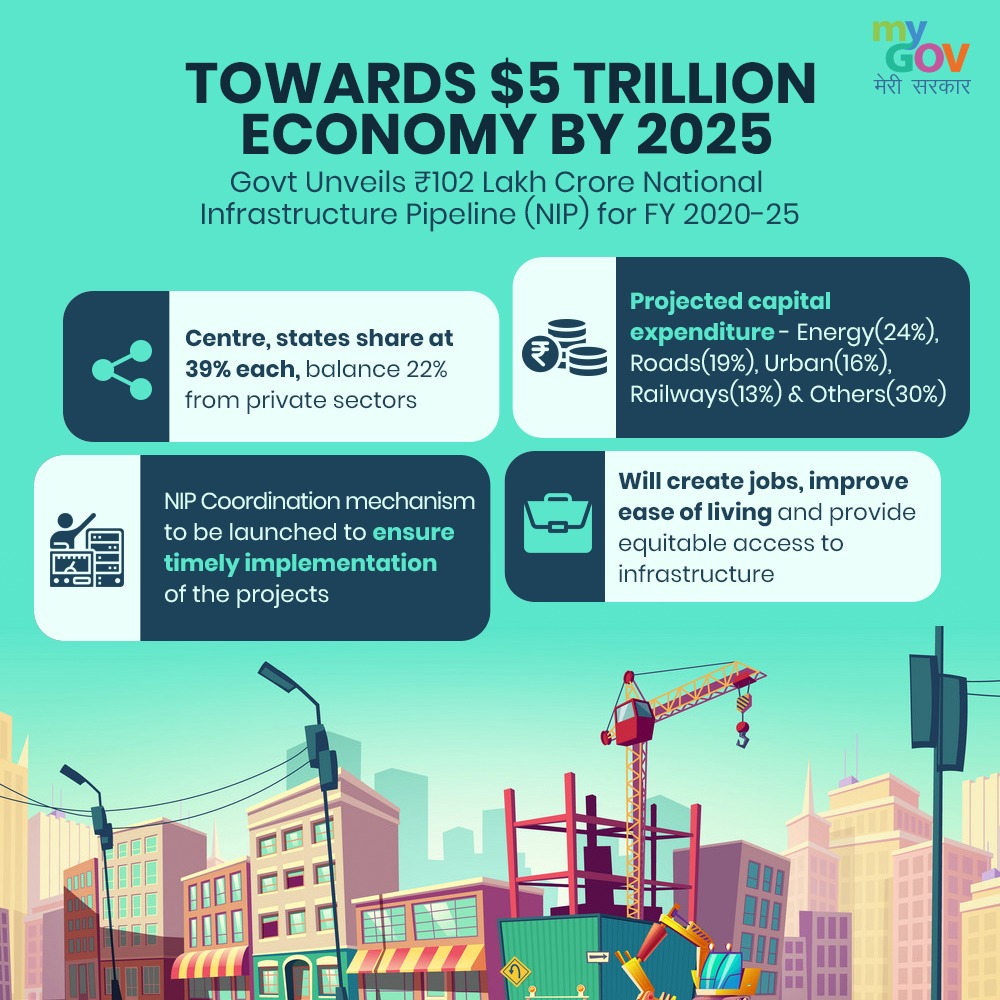
Central idea
The article critically examines India’s ambitious pursuit of a $5 trillion GDP by 2028, juxtaposing it with Japan’s economic trajectory. It highlights concerns about wealth disparity, inclusivity in high-tech sectors, and questions the impact on marginalized citizens.
Key Highlights:
- Extension of Welfare Scheme: Prime Minister Modi’s announcement to extend the Pradhan Mantri Garib Kalyan Ann Yojna by five years.
- Concerns about Hunger: Raised concerns about persistent hunger despite the ambitious target of achieving a $5 trillion GDP by 2028.
- Japan’s Economic Challenges: Comparison with Japan’s economic growth and the social challenges faced, including suicide rates and social withdrawal.
- Reliance on GDP Growth: Emphasis on India’s economic growth relying on capital, productivity, and labor.
- Wealth Disparity: Identification of significant wealth disparity, with 1% of the population owning a substantial portion of the nation’s wealth.
- Government’s Economic Tools: Government’s identification of sectors and tools, such as the digital economy, fintech, and climate change initiatives.
Key Challenges:
- Impact on Marginalized Citizens: Expressing concerns about the potential adverse impact on marginalized citizens in the race towards a $5 trillion economy.
- Wealth Inequality: Highlighting the wealth disparity issue, with 1% of the population owning a significant portion of the nation’s wealth.
- Inclusivity in High-Tech Sectors: Concerns about the ability of a large segment of the population to participate in cutting-edge sectors such as AI, data science, and fintech.
- Lack of Per Capita Income Estimates: Criticism regarding the absence of estimates on India’s per capita income at the $5 trillion GDP mark.
Key Terms and Phrases:
- Pradhan Mantri Garib Kalyan Ann Yojna: Specific welfare scheme providing free foodgrains.
- Hikikomori: Term referring to severe social withdrawal in Japan.
- Kodokushi: Japanese term for lonely deaths.
- GST (Goods and Services Tax): Mention of the significant contribution from the bottom 50% of the population.
- Inclusive Growth: Government’s emphasis on growth that includes all segments of society.
- Insolvency and Bankruptcy Code: Part of the identified tools for achieving the $5 trillion goal.
- Make in India: Mention of one of the identified sectors for economic growth.
- Start-Up India: Highlighting a sector emphasized for achieving economic targets.
- Production Linked Incentives: Part of the government’s strategy for economic growth.
Key Examples and References:
- Japan’s Societal Challenges: Referring to suicide rates, social withdrawal, and lonely deaths in Japan as examples.
- Wealth Distribution Statistics: Citing wealth distribution statistics from Oxfam.
- Minister Chaudhri’s Identification: Referring to the government’s identification of tools and sectors for achieving the $5 trillion goal.
- Per Capita Income Comparison: Comparing per capita income between Japan, China, and India.
Key Facts and Data:
- Welfare Scheme Extension: Mentioning the extension of the Pradhan Mantri Garib Kalyan Ann Yojna.
- Japan’s Economic History: Referring to Japan’s economic history and challenges post-2008.
- Wealth Distribution Data: Citing wealth distribution data from Oxfam.
- GST Contribution: Highlighting the significant contribution of different income groups to GST.
Critical Analysis:
- Societal and Economic Impact: Analyzing the potential impact of the $5 trillion goal on marginalized citizens and society.
- Wealth Disparity and Inclusive Growth: Critical evaluation of wealth distribution and the need for inclusive economic policies.
- Capability Mismatch: Examining the mismatch between targeted sectors/tools and the capabilities of a significant population segment.
- Per Capita Income Concerns: Critically assessing the absence of estimates on per capita income and concerns about the inequality index.
Way Forward:
- Addressing Wealth Disparity: Emphasizing the need to address wealth disparity through inclusive economic policies.
- Ensuring Inclusive Growth: Focusing on ensuring that economic growth benefits all segments of the population.
- Skill Development and Education: Highlighting the importance of skill development and education to enable participation in emerging sectors.
- Regular Assessment and Recalibration: Emphasizing the need for regular assessment and recalibration of economic goals to align with societal well-being.
Get an IAS/IPS ranker as your 1: 1 personal mentor for UPSC 2024
Attend Now
Note4Students
From UPSC perspective, the following things are important :
Prelims level: Indian Inflation
Mains level: Economic Resilience and Stability
Central idea
The article discusses positive economic indicators in India, including potential GDP growth, easing inflation, and successful festive season trading. It emphasizes the need for careful monitoring of oil prices, external demand, political developments, and continued policy coordination to sustain economic resilience and growth.
Key Highlights:
- Macroeconomic Positivity: November brings positive trends in India’s macroeconomic perspective, with optimism about second-quarter GDP growth.
- Geopolitical Developments: Ceasefire agreement between Israel and Hamas and a summit between U.S. President Joe Biden and China’s President Xi Jinping signal positive global geopolitical shifts.
- Inflation Trends: Global inflation rates, particularly in the U.S. and the European Union, ease, contributing to reduced bond yields and increased equity market performance.
- Indian Economic Signals: India experiences a decline in retail inflation and wholesale price index, with encouraging signals from festive season trading.
Key Challenges:
- Continued Monitoring: Factors such as oil prices, external demand, and political developments require continued monitoring for potential impacts on India’s economic trajectory.
- Global Trade Weakness: The global trade environment remains weak, with projections indicating a decline in world trade growth.
- Political Influences: Focus on general elections after state election results may influence government and private sector activities.
- Policy Coordination: Maintaining monetary and fiscal policy coordination is crucial, considering global risks and persistent inflation threats.
Key Terms:
- GDP (Gross Domestic Product)
- Inflation
- Bond Yields
- Geopolitics
- Macro and Financial Stability
- GST (Goods and Services Tax)
- Fiscal Deficit
- OPEC+ (Organization of the Petroleum Exporting Countries and allies)
Key Phrases:
- “Economic Resilience and Stability.”
- “Sequential Changes for Meaningful Analysis.”
- “Crucial Policy Coordination in a Shock-Prone World.”
Key Examples and References:
- Geopolitical Shifts: Ceasefire agreement between Israel and Hamas, U.S.-China summit.
- Global Inflation Trends: Positive trends in global inflation rates.
- Indian Economic Signals: Decline in retail inflation, wholesale price index, and record festive season retail trading.
Key Facts and Data:
- U.S. Inflation: Consumer price index at 3.2% in October.
- EU Inflation: Drops to 2.9% from 4.3%.
- Indian Inflation: Retail inflation at a four-month low of 4.9%.
- Expected GDP Growth: India’s GDP growth for Q2 expected to exceed 6.5%.
Critical Analysis:
- Emphasis on Fundamentals: Need for sound macroeconomic fundamentals and close monitoring of economic indicators.
- Identification of Challenges: Recognition of potential challenges such as oil price fluctuations, weak external demand, and political uncertainties.
- Policy Coordination: Importance of monetary and fiscal policy coordination in navigating a complex economic environment.
Way Forward:
- Economic Resilience: Continued focus on maintaining economic resilience and stability.
- Monitoring and Response: Continuous monitoring and responsive measures for global and domestic economic challenges.
- Policy Emphasis: Continued emphasis on policy coordination for sustained growth.
- Preserving Global Standing: Importance of prudent economic management for preserving India’s relative global standing.
Get an IAS/IPS ranker as your 1: 1 personal mentor for UPSC 2024
Attend Now
Note4Students
From UPSC perspective, the following things are important :
Prelims level: Gaza strip
Mains level: education's potential to mitigate the impact of violent imagery children's minds.
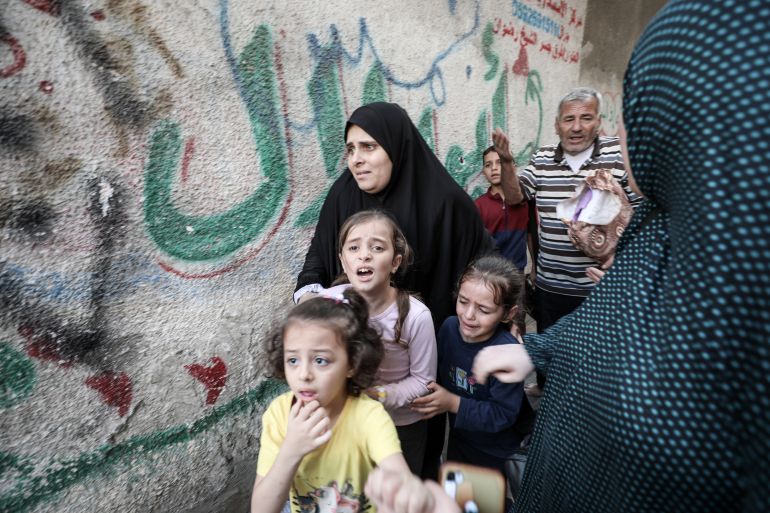
Central idea
The article emphasizes the profound psychological impact of the Israeli-Palestinian conflict on children, drawing insights from educational thinkers like Maria Montessori and Elias Canetti. It highlights challenges such as potential long-term repercussions, the failure of current education systems, and the need for inclusive educational initiatives.
Key Highlights:
- Montessori’s Perspective: Maria Montessori’s insights on the impact of childhood experiences, particularly exposure to violence, on the cycle of revenge and its contribution to the root causes of war.
- Canetti’s Argument: Elias Canetti’s exploration of the child’s mind, emphasizing the development of revengeful thoughts from violent experiences and its potential evolution into adult rebellion.
- Israeli-Palestinian Conflict: The psychological aftermath of Israel’s assault on Gaza, with a focus on the predicted impact on Palestinian children, especially adolescents, facing forced displacement and an uncertain future.
- Educational Philosophies: Montessori’s pedagogic philosophy linking childhood experiences to major societal issues and the inter-war movement’s attempt to use education to combat the culture of war.
Key Challenges:
- Psychological Impact: Predicted long-term psychological repercussions on Palestinian children due to the trauma of conflict, displacement, and loss of childhood.
- Failure of Education Systems: Critique of current education systems worldwide for lacking the energy and focus needed to mitigate the political impact of dangerous ideologies and nurture peace.
- Historical Hostilities: The perpetuation of divisive ideas through education, contributing to the reinforcement of historical hostilities in contiguously located hostile nations.
- Political Ignorance: Leaders’ disregard for educational messages promoting peace, as exemplified by Israel’s leaders ignoring Montessori’s insights amid conflict.
Key Examples discussed in article for your value addition in answers:
- Reference to Maria Montessori’s classics, including “The Secret of Childhood” and “The Absorbent Mind.”
- Collection of Montessori’s war and peace lectures during the 1930s in the book titled “Education and Peace.”
- Elias Canetti’s insights in “Crowds and Power,” highlighting the impact of violence on the child’s mind and the development of revengeful thoughts.
- Montessori and Rabindranath Tagore’s involvement in an inter-war movement using education to combat the culture of war.
Key Terms and Phrases:
- Cycle of Revenge: Montessori’s concept that a child’s encounter with violence sets off a cycle of revenge, identified as a root cause of war.
- Resistance to Social Norms: Canetti’s notion that violence experienced in childhood can lead to adult resistance, transforming into rebellion.
- Culture of War: The inter-war movement’s initiative, involving educators like Montessori and Tagore, aimed at using education to combat the culture of war.
- Impact of Dangerous Ideologies: Critique of education’s perceived inability to reverse the political impact of ideologies contributing to conflict.
Critical Analysis:
- Educational Potential: Acknowledgment of education’s potential to mitigate the impact of violent imagery, coupled with frustration over the perceived lack of energy in current education systems.
- Global Disappointment with Education: Growing disappointment with education’s ability to nurture basic good sense, exemplified by the failure to prevent conflicts in Russia, Israel, and the U.S.
- Focus on Politics: Critique of current discussions about the future of Gaza, primarily focused on politics, with a call to include considerations for the future of education in the region.
- Reinforcement of Divisive Ideas: Observation that education often reinforces and perpetuates divisive ideas, preparing the adult mind to accept such ideas as the only way forward.
Way Forward:
- Inclusive Educational Initiatives: Emphasis on inclusive educational initiatives to combat the culture of war and break the cycle of historical influences on children’s minds.
- Integration of Philosophical Perspectives: Advocacy for integrating educational and philosophical perspectives to pave the way for a more peaceful future, particularly in conflict-ridden regions.
- Global Reassessment of Education: Urgent need for a global reassessment of education’s power to inculcate basic good sense and contribute to peace-building.
- Educational Focus in Political Discussions: Call to include discussions about the future of education alongside political considerations in conflict-ridden regions like Gaza and Israel.
Get an IAS/IPS ranker as your 1: 1 personal mentor for UPSC 2024
Attend Now
Note4Students
From UPSC perspective, the following things are important :
Prelims level: Auger technology, Drift technology
Mains level: Risks and challenges associated with the rescue operation

Central idea
The central idea focuses on the Silkyara Tunnel rescue in Uttarakhand, highlighting diverse worker representation and challenges in Himalayan geology. The strategic use of auger and drift technology plays a crucial role in the efficient rescue operation. The primary goal is the safe return of 41 trapped workers through a unified and adaptive approach.
Key Highlights:
- Silkyara Tunnel incident in Uttarkashi, Uttarakhand, sparks a coordinated effort by government and private agencies.
- 41 workers trapped in a partially collapsed tunnel, representing a diverse group from different states.
- Technological advancements, communication, and transportation are leveraged for the rescue operation.
- Involvement of multiple government bodies, including the Prime Minister’s Office and various ministries.
Key Challenges:
- Risks and challenges associated with the rescue operation, including the unpredictable nature of Himalayan geology.
- The need to balance urgency with caution in the rescue efforts.
- Varying degrees of difficulty in deploying machinery due to the risk factor and geological complexities.
Key Terms and Phrases for value addition:
- Silkyara Tunnel
- “All of government” approach
- Himalayan geology
- Simultaneity principle
- Auger technology
- Drift technology
- Convergence of capability
Auger Technology:
- Definition: Auger technology involves the use of a rotating metal shaft with a blade at the end.
- Application in Rescue: In the Silkyara Tunnel rescue, auger technology is deployed to scrape or cut debris and earth, creating a path for rescuers.
- Success: A portion of 22 meters has been successfully negotiated, demonstrating the effectiveness of auger technology.
- Challenges: Geological impediments have posed challenges, requiring restarting the effort.
Drift Technology:
- Definition: Drift technology involves scraping the sides of the tunnel to increase its size and create access.
- Application in Rescue: Used to widen the tunnel for easier access and maneuverability in the rescue operation.
- Timing: Top and side boring attacks on the tunnel alignment will commence in due course.
- Redundancy: Provides a redundant approach to ensure the success of the rescue operation.
Key Facts and Data:
- 41 workers trapped inside a partially collapsed tunnel.
- Efforts initiated by the Prime Minister’s Office, Ministry of Road Transport and Highways, Ministry of Home Affairs, NDMA, and Uttarakhand SDMA.
- Five rescue approaches with time frames ranging from five-six days to eight weeks.
Critical Analysis:
- Emphasis on the coordinated efforts involving various government bodies and private sectors.
- Recognition of the unpredictable nature of Himalayan geology and the associated challenges.
- Utilization of advanced technologies such as auger and drift technology to address the complexities.
- Highlighting the psychological and social impacts on workers and the provision of psycho-social specialists.
- Acknowledgment of the importance of enabling convergence of capability among competent agencies.
Way Forward:
- Continued focus on simultaneous approaches to expedite the rescue operation.
- Prioritizing the horizontal approach using auger technology and drift technology.
- Recognition of leadership from New Delhi as a crucial factor in ensuring effective coordination.
- Emphasizing the importance of the safe return of the trapped workers as the primary goal.
Get an IAS/IPS ranker as your 1: 1 personal mentor for UPSC 2024
Attend Now
Note4Students
From UPSC perspective, the following things are important :
Prelims level: na
Mains level: freebies

Central idea
Criticism surrounds politicians making empty promises for votes. The debate involves what’s genuinely good for the public versus just offering freebies. The solution suggests caution in promises, financial responsibility, and sticking to clear ideas for long-term success.
Key Highlights:
- The editorial criticizes political parties for making “reckless election promises” and engaging in competitive populism.
- Elite condemnation of “fiscally irresponsible freebies” is a recurring theme in national discourse.
- The Supreme Court has addressed the issue, expressing concern that freebies may hinder the state government’s ability to provide basic amenities.
- The RBI also identified the distribution of freebies as a new risk to state finances.
Key Challenges:
- The challenge of mass communication in electoral politics is highlighted, emphasizing the need for simple and easily communicable messages.
- Governance for development is complex, with political and economic contingencies affecting the ability to showcase tangible progress.
- Excessive reliance on direct benefits erodes the party platform and may lead to a transactional relationship with voters.
Key Terms and Phrases for adding value to answer:
- Reckless election promises
- Competitive populism
- Fiscally irresponsible freebies
- Basic amenities
- Mass communication in electoral politics
- Governance for development
- Political economy
- Direct benefits
- Transactional arrangement
Key Facts and Data:
- The Supreme Court held hearings on a petition to bar parties from promising “irrational freebies from public funds.”
- The RBI highlighted the “growing preference for distribution of ‘freebies'” as a new risk to state finances.
Critical Analysis:
- The editorial raises questions about the definition of public good versus freebies, emphasizing the need for a democratic contestation of these concepts.
- The challenge of mass communication is explored, pointing out the reliance on simple messages like slogans during political campaigns.
- Governance for development is considered complex, with obstacles such as time constraints and political economy dynamics.
- Excessive reliance on direct benefits is criticized for eroding the party platform and creating a transactional relationship with voters.
Way Forward:
- The editorial suggests that while direct benefits are a legitimate aspect of building political mandates, party leaders should be cautious not to let these benefits supplant the broader party platform.
- Emphasizes the importance of maintaining a coherent ideological framework to avoid the depletion of the party platform.
- Calls for a comprehensive review of relevant trade-offs in state finances to ensure responsible fiscal policies.
Get an IAS/IPS ranker as your 1: 1 personal mentor for UPSC 2024
Attend Now
Note4Students
From UPSC perspective, the following things are important :
Prelims level: GDP growth
Mains level: non-monetized contributions within families and communities.
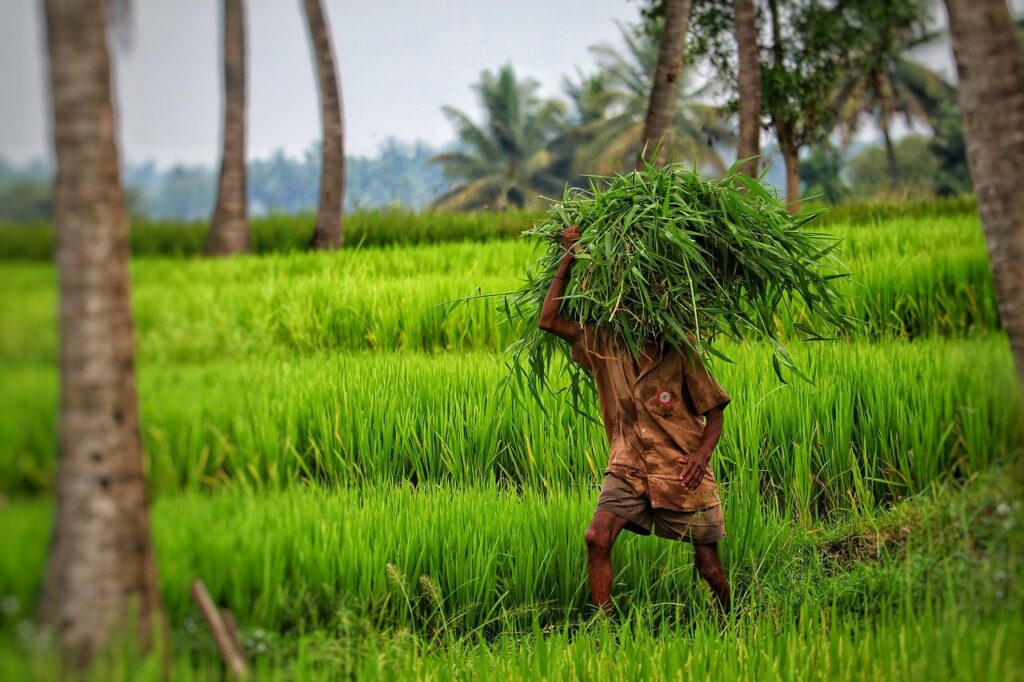
Central idea
India faces an income stagnation crisis despite overall GDP growth, with inadequate job quality. The global economic landscape calls for a paradigm shift towards sustainability and localized enterprises. Recognizing and valuing informal caregiving is crucial for a more equitable and economically inclusive future.
Key Highlights:
- Indian Economic Landscape: In the Indian economic landscape, the primary issue lies in the stagnation of incomes, not a lack of growth. Despite favorable GDP figures, there is a growing demand for job reservations, transcending caste and religion.
- Debates and Doubts in Economic Discourse: Economists are embroiled in a debate over job creation, casting doubts on the authenticity of government data. The discourse extends to attributing the current job challenges to the policies of the present government.
- U.S. Economic Discontent: The U.S. economy, despite positive headline numbers, faces widespread dissatisfaction among citizens. This discontent takes center stage in the lead-up to the presidential elections, with concerns about fair wages and executive compensation.
- Call for a Paradigm Shift: A paradigm shift is urged, emphasizing a departure from conventional growth metrics to address environmental and social concerns. The call for local, green, and organic initiatives signals a quest for a sustainable economic future.
- Recognition of Caregiving: There is a notable plea to recognize the economic and societal value of caregiving, challenging the prevailing economic paradigm that overlooks the contributions of informal work, particularly by women.
Key Challenges:
- Quality Jobs in India: The transition from agriculture to manufacturing in India lacks the creation of quality jobs. The prevalent scenario involves insecure, temporary employment with insufficient pay across various sectors.
- Global Economic Landscape at a Crossroads: The global economic landscape is at a crucial juncture, necessitating innovative economic ideas. The preference for local economic webs over extensive global supply chains is indicative of a shift towards sustainability.
- Undervaluation of Caregivers: Caregivers, predominantly women, continue to be undervalued economically. The informal caregiving sector lacks acknowledgment, perpetuating societal disparities.
- Distortion in Economic Measurements: The distortion of economic measurements rooted in 20th-century concepts poses a challenge. The fixation on GDP growth eclipses the diminishing value of human care, leading to a skewed representation of economic health.
Key Terms and Phrases:
- “Economies of Scope”: Emphasizes a shift towards determining enterprise viability based on diversity rather than scale, promoting local businesses’ adaptability.
- “Social Enterprises”: Underscore businesses contributing to social value alongside economic efficiency, reflecting a desire for a more holistic approach to economic success.
- “Informal Work Undervaluation”: Critique highlights economists’ oversight of the economic significance of informal caregiving, emphasizing the need for a broader perspective.
- “Paradigm Shift in Policy”: Advocates for inclusive policymaking, centering on the voices of marginalized communities to address systemic issues.
Key points:
- Indian Workforce Transition: Concerns about the quality of jobs in India are substantiated by a significant workforce transition from agriculture to labor-intensive sectors, marked by temporary and insecure employment.
- U.S. Economic Dissatisfaction: In the U.S., despite positive economic indicators, dissatisfaction among citizens remains a pressing issue. Presidential engagement with autoworkers underscores concerns about fair wages and wealth distribution.
Critical Analysis:
- Economic Paradigm Distortion: The economic paradigm distortion reveals a prioritization of GDP growth over the diminishing societal value of caregiving. This recognition sets the stage for a necessary reevaluation of economic priorities.
- Reforming Economic Measurements: The call for reforms in economic measurements underscores the urgency of adapting metrics to reflect the desired forms of work and enterprises for the future.
- Neglect of Informal Caregiving: Neglecting the economic value of informal caregiving underscores the need for a paradigm shift in acknowledging the non-monetized contributions within families and communities.
Way Forward:
- Transition to Local Economic Webs: The emphasis on transitioning from global supply chains to local economic webs signals a shift towards sustainability, environmental responsibility, and community-focused practices.
- Reforming Economic Measurements: Reforming economic measurements is essential to align with a broader understanding of valuable work, moving beyond GDP as the sole indicator of economic health.
- Recognition of Caregivers: Advocating for the recognition and valuation of caregivers indicates a need for societal and economic perspectives to evolve, appreciating the importance of caregiving.
- Inclusive Policymaking: Inclusive policymaking, with a focus on marginalized voices, is pivotal for addressing systemic issues and fostering a more equitable economic landscape. Listening to the diverse experiences of workers, farmers, entrepreneurs, and women should guide future policy formulations.
Get an IAS/IPS ranker as your 1: 1 personal mentor for UPSC 2024
Attend Now
Note4Students
From UPSC perspective, the following things are important :
Prelims level: RBI governor
Mains level: leadership during a critical financial period

Central idea
S Venkitaramanan, as RBI Governor, navigated a challenging financial landscape, implementing innovative measures, including pledging gold reserves, to overcome a critical balance of payment crisis exacerbated by the Iraq-Kuwait War. His leadership traits, commitment to reform, and resilience in dynamic political shifts define his impactful legacy
Key Highlights:
- Historical Interaction with S Venkitaramanan: The author shares a personal connection with S Venkitaramanan dating back to the late 1980s when they worked together in the Reserve Bank of India (RBI). Venkitaramanan, at that time, was the Finance Secretary in the government of India.
- Challenges Faced by Venkitaramanan as RBI Governor: Venkitaramanan assumed the role of RBI Governor during a challenging period marked by a critical balance of payment problem, intensified by the Iraq-Kuwait War. The situation demanded unconventional measures, including shipping gold reserves to raise foreign exchange.
- Extraordinary Steps Taken: To address the balance of payment crisis, the RBI, under Venkitaramanan’s leadership, borrowed around USD 405 million by pledging gold reserves kept outside India. This unusual step showcased determination and innovation in navigating a complex financial scenario.
- Dynamic Political Environment: The backdrop of frequent changes in the central government added complexity to the financial responsibilities of the RBI and its governor. Venkitaramanan played a crucial role in tapping international financial institutions and raising the necessary foreign exchange.
- Role of IMF and Devaluation of Rupee: The RBI, led by Venkitaramanan, approached the International Monetary Fund (IMF) for assistance. The initial request was related to the Compensatory and Contingency Financing Facility (CCFF), providing limited conditionalities. Additionally, the government, in consultation with the RBI, decided to devalue the rupee sharply in two steps in June 1991.
- Reform Initiatives: Venkitaramanan was a reformer who initiated banking sector reforms and introduced changes in the exchange rate system, moving towards a dual exchange rate. He advocated for a strong role for public sector enterprises where efficiency could be maintained.
- Leadership Traits: Venkitaramanan’s leadership qualities included a sharp mind, the ability to cut through complex problems, a willingness to listen to diverse viewpoints, and courage in making crucial decisions.
Key Challenges:
- Balance of Payment Crisis: Venkitaramanan faced a critical balance of payment problem aggravated by external factors such as the Iraq-Kuwait War. The challenge was to bridge the financial gap and avoid default in payment obligations.
- Dynamic Political Changes: Frequent changes in the central government added an additional layer of complexity to financial decision-making. Venkitaramanan navigated these changes while fulfilling the responsibilities of the RBI.
Key Terms and Phrases:
- Compensatory and Contingency Financing Facility (CCFF): An IMF facility created to aid countries facing sudden rises in the price of imported commodities or a sudden fall in export prices. The RBI approached the IMF for assistance, initially focusing on the CCFF.
- Dual Exchange Rate System: Venkitaramanan initiated a shift towards a dual exchange rate system, marking a significant change in the country’s approach to managing its currency’s value.
- Gold Pledging to Raise Foreign Exchange: The RBI, under Venkitaramanan, borrowed around USD 405 million by pledging gold reserves kept outside India during the balance of payment crisis.
Critical Analysis:
- Innovative Leadership in Crisis: Venkitaramanan’s decision to ship gold reserves and explore unconventional measures showcased innovative leadership during a financial crisis, preventing a default in payment obligations.
- Navigating Political Changes: Managing financial responsibilities amid frequent changes in the central government demonstrated Venkitaramanan’s ability to navigate a dynamic political environment, ensuring financial stability.
- Reform Initiatives for Financial Resilience: Venkitaramanan’s focus on banking sector reforms and a dual exchange rate system aimed at enhancing financial resilience during turbulent times, showcasing a forward-looking approach.
Way Forward:
- Building on Reform Initiatives: Advocate for building on the reform initiatives introduced by Venkitaramanan, emphasizing the importance of a resilient financial system in navigating future economic challenges.
- Continued Collaboration with International Institutions: Encourage continued collaboration with international financial institutions to strengthen India’s economic resilience, leveraging lessons learned from Venkitaramanan’s innovative approaches.
- Maintaining a Prudent Financial Policy: Emphasize the importance of prudent financial policies, considering both domestic and international factors, to ensure stability and resilience in the face of economic uncertainties.
Balanced Diplomatic Conclusion for good marks:
S Venkitaramanan’s leadership during a critical financial period exemplifies courage, innovation, and resilience. Acknowledging his contributions, the nation can build on reform initiatives, collaborate globally, and maintain prudent financial policies for a stable and resilient economic future.
Get an IAS/IPS ranker as your 1: 1 personal mentor for UPSC 2024
Attend Now




![The Marathas' Demand for Reservation: A Litigation History [2014-21] - Supreme Court Observer](https://www.scobserver.in/wp-content/uploads/2021/10/Maratha-Litigation-History-2640-x-1100-px.png)















